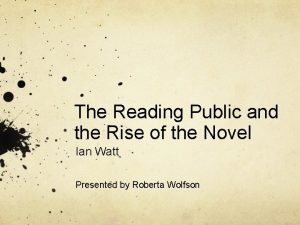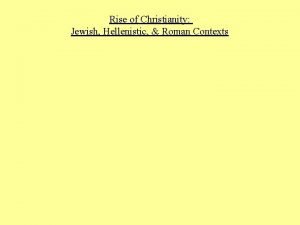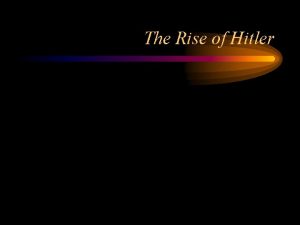The Rise of the Novel A novel is











- Slides: 11

The Rise of the Novel

A novel is a long work of narrative fiction, normally written in prose form, and which is typically published as a book. The term for the novel in most European language is roman, which suggests its closeness to the medieval romance. The English name is derived from the Italian novella meaning “a little new thing”. Romances and novellas, short tales in prose, were predecessors of the novel.

Romance or chivalric romance is a type of narrative in prose or verse popular in the aristocratic circles of High Medieval and Early Modern Europe. They were marvel-filled adventures, often of a knight with heroic qualities, who carries out a quest. In later romances, particularly those of French origin, there is a marked tendency to emphasize themes of courtly love.

Italian Novella Since the 18 th century, the term "novella", or "novelle" in German, has been used in English and other European languages to describe a long short story or a short novel. First English novel is said to be Daniel Defoe’s Robinson Crusoe 1719 and the his Moll Flanders 1722.

Factors Responsible for the Rise of Novel in the 18 th Century 1. Rise of Realism The 18 th-century literature was characterized by the spirit of realism. Reason, intellect, and correctness were the main characteristics of 18 th -century literature. It is also considered as a product of an intellectual milieu shaped by the seventeenth-century philosophers as Descartes and Locke, who insisted upon the importance of individual experience. The reading public wanted to see their lives reflected in a literary form. Novelists like Defoe and Richardson, were writing about the struggles of middle-class people and using experiences that were clearly recognizable to the reading public. They represented characters in particular places and times with familiar naming. Subjects were relevant to 18 th century concerns.

2. Availability of Printed Materials In the 18 th century, the appearance of newspapers and magazines attracted a large number of readers from the middle class. These new readers had little interest in the romances and the tragedies which had interested the upper class. Thus, the need for new type of literature that would express the new ideas of the 18 th century rose, and this new type of literature was none but novel.

3. Rise of Middle Class An equally important element in the rise of the novel was economic. As industrialization increased, a middle class developed rapidly in England. With the increasing middle class came more education and leisure time, both ingredients in the popularity of the novel as more people had time to read and more money to buy books.

4. Role of Women In the 18 th century, women of upper classes and the middle classes could not participate in the activities of men. They could not engage themselves in administration, politics, hunting, drinking etc. hence, in their leisure time, they used to read novels.

5. Decline of Drama The decline of drama also contributed to the rise of the novel in the 18 th century. In the 18 thcentury, drama lost its fame that it had in the Elizabethan Age. It did not remain an influential literary form, thus its place was filled by the English novel after 1740. Thus the decline of drama led to the rise of the English novel.

6. Circulating Libraries A circulating library is quite similar to the public libraries that we have today. People were able to borrow a limited number of books for a set length of time, and they were subject to fines if items were lost, damaged, or returned after the due date. Likewise, circulating libraries stocked a wide range of items including non-fiction, and eventually children’s books.

Thank You
 Tricky dicky richard nixon
Tricky dicky richard nixon Rise again and again until lambs
Rise again and again until lambs A union b example
A union b example Rise and rise again until lambs become lions
Rise and rise again until lambs become lions Ian watt the rise of the novel summary
Ian watt the rise of the novel summary Tỉ lệ cơ thể trẻ em
Tỉ lệ cơ thể trẻ em Lời thề hippocrates
Lời thề hippocrates đại từ thay thế
đại từ thay thế Vẽ hình chiếu đứng bằng cạnh của vật thể
Vẽ hình chiếu đứng bằng cạnh của vật thể Quá trình desamine hóa có thể tạo ra
Quá trình desamine hóa có thể tạo ra Môn thể thao bắt đầu bằng chữ f
Môn thể thao bắt đầu bằng chữ f Công của trọng lực
Công của trọng lực




















